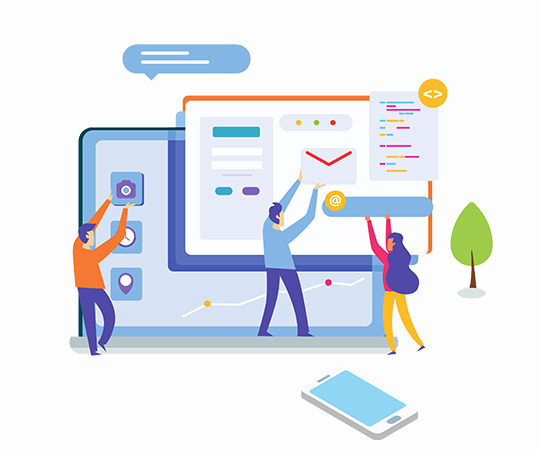In the ever-evolving landscape of technology, augmented reality (AR) stands at the forefront, poised to revolutionize the way we perceive and interact with the world. At the heart of this transformative technology are augmented reality developers, the architects of immersive experiences that seamlessly blend the digital and physical realms. As a senior content writer, let’s delve into the intricacies of the roles, skills, and impact that augmented reality developers bring to the table.
Understanding Augmented Reality Development: A Fusion of Creativity and Technology
1. Roles of Augmented Reality Developers:
Augmented reality developers play multifaceted roles in the creation and implementation of AR applications. Their responsibilities include:
- Conceptualization and Design: Developers conceptualize AR experiences, envisioning how digital elements will augment the real world. This involves creating user interfaces, 3D models, and interactive elements.
- Coding and Programming: Proficient in programming languages like C#, Swift, or Java, developers write the code that brings AR applications to life. They work with frameworks such as ARKit (iOS) or ARCore (Android) to integrate AR functionalities.
- Testing and Debugging: Rigorous testing is crucial to ensure the seamless integration of AR into real-world environments. Developers troubleshoot and debug applications to address any issues and enhance overall performance.
- Integration with Hardware: AR developers collaborate with hardware specialists to ensure compatibility with AR devices. This involves optimizing applications for smartphones, smart glasses, or other AR-enabled devices.
- Continuous Learning: Given the rapid advancements in AR technology, developers engage in continuous learning to stay abreast of new tools, frameworks, and techniques. This adaptability is key to delivering cutting-edge AR solutions.
2. Key Skills of Augmented Reality Developers:
Augmented reality development demands a unique skill set that combines technical proficiency with creative innovation. The key skills include:
- Programming Languages: Fluency in languages such as C#, Swift, Java, or JavaScript is essential for coding AR applications.
- 3D Modeling and Animation: A solid understanding of 3D modeling tools (e.g., Blender, Maya) and animation software is crucial for creating lifelike and interactive AR elements.
- Unity or Unreal Engine: Mastery of game development engines like Unity or Unreal Engine, which are commonly used for AR app development.
- Spatial Computing: Understanding spatial computing concepts, including spatial mapping and tracking, is vital for creating AR experiences that seamlessly interact with the physical environment.
- User Interface (UI) Design: Proficiency in UI design principles ensures that AR applications are visually appealing, user-friendly, and provide an intuitive experience.
- Problem-Solving: AR developers must possess strong problem-solving skills to address technical challenges and optimize AR applications for various devices and environments.
Impact of Augmented Reality Developers: Enhancing Industries Across the Spectrum
1. Gaming Industry:
Augmented reality developers have played a pivotal role in transforming the gaming industry. Games like Pokémon GO introduced the world to the potential of AR, blending fictional elements with the real world. Developers continue to push boundaries, creating immersive gaming experiences that transcend traditional boundaries.
2. Education and Training:
AR developers contribute to revolutionizing education by creating interactive learning experiences. From anatomy lessons with 3D models to historical tours with augmented overlays, AR enhances understanding and engagement. Training simulations for various professions also benefit from realistic AR environments.
3. Retail and E-Commerce:
In the retail sector, AR developers contribute to enhancing the online shopping experience. Virtual try-on features, AR-enabled catalogs, and in-store navigation apps provide customers with a more interactive and personalized shopping journey.
4. Healthcare and Medical Training:
Augmented reality developers are instrumental in healthcare, where AR applications aid in surgery planning, medical training, and patient education. Interactive anatomy models and surgical simulations provide valuable insights and enhance medical professionals’ skills.
5. Real Estate:
AR is transforming the real estate industry by allowing prospective buyers to visualize properties in a more immersive way. AR applications enable virtual property tours, providing a realistic sense of space and layout.
6. Manufacturing and Maintenance:
In industrial settings, AR developers create applications that assist with equipment maintenance, training, and assembly processes. AR-guided instructions overlaid on machinery streamline complex tasks, reducing errors and improving efficiency.
Challenges and Future Trends in Augmented Reality Development
1. Challenges:
- Hardware Limitations: The full potential of AR is often limited by the capabilities of available hardware. Developers face the challenge of creating applications that deliver a seamless experience across a variety of devices with different specifications.
- User Adoption: The widespread adoption of AR applications depends on user acceptance and comfort. Developers must create intuitive and user-friendly experiences to encourage broader adoption.
- Privacy Concerns: AR applications often require access to real-time data and environments, raising concerns about user privacy. Developers must implement robust security measures to address these concerns.
2. Future Trends:
- AR Cloud: The development of AR Cloud, a persistent and shareable AR environment, is a trend that holds immense potential. This technology allows users to interact with shared AR experiences across different devices and locations.
- Wearable AR Devices: The rise of wearable AR devices, such as AR glasses, is anticipated to be a game-changer. Developers will play a crucial role in optimizing applications for these devices and creating seamless user experiences.
- Integration with 5G: The rollout of 5G networks will significantly enhance AR experiences by providing faster and more reliable connectivity. Developers will leverage 5G capabilities to create more sophisticated and data-intensive AR applications.
- AI Integration: Augmented reality developers are increasingly integrating artificial intelligence (AI) into AR applications. This includes AI-driven image recognition, object detection, and real-time data analysis to enhance the overall AR experience.
Conclusion: Crafting the Future of Augmented Reality
In conclusion, augmented reality developers are the visionary creators shaping the future of technology. Their ability to blend technical expertise with creative innovation has resulted in transformative applications across various industries. From gaming and education to healthcare and real estate, the impact of augmented reality developers is evident in the immersive experiences they bring to life.
As technology continues to advance, the role of augmented reality developers will evolve, presenting new challenges and opportunities. The journey of augmented reality development is an ongoing exploration into the possibilities of merging the digital and physical worlds. As we stand on the precipice of a new era, the architects of augmented reality are poised to lead the way, crafting a future where the boundaries between reality and imagination blur seamlessly.



